Base Communication

How many communication base stations are needed to cover a city ?
This article discusses the factors affecting the number of communication base stations required for a city, including city size and population density, topography, and building height. It also provides an estimate formula to calculate the number of base stations needed based on city area and coverage per station. The conclusion emphasizes the importance of considering these factors in network planning and deployment to ensure reliable communication services across the city.
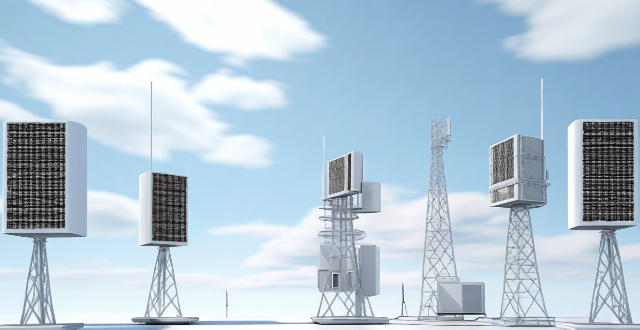
How do communication base stations work ?
Communication base stations, or cell towers, are vital for wireless networks. They consist of antennas, transceivers, controllers, and power supplies to transmit and receive signals. The process includes encoding user data, modulating it onto RF waves, transmitting via antenna arrays, receiving by mobile devices, and decoding back to the original format. Coverage areas depend on antenna height, power, and topography, while handover processes ensure seamless transitions between base stations. Connected to a core network via backhaul links, base stations enable voice calls, messages, and data services, adapting to technological advancements to meet increasing demands.
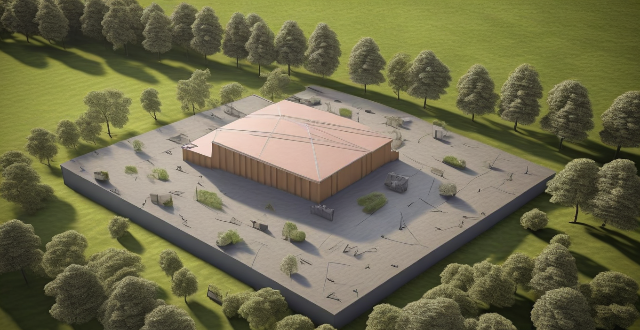
What is the range of a typical communication base station ?
The typical communication base station, also known as aThe typical communication base station, also known as a specific geographic area with wireless The range of a base station can vary based on the type of technology used, the height and location of the tower, and the surrounding environment. Different technologies have different range capabilities, with newer ones like 4G and 5G offering greater coverage and capacity than older technologies like 2G. Tower height and location also play a significant role in determining its range, with taller towers covering wider areas and being less affected by signal blockage. The surrounding environment, including urban or rural areas, can impact the range of a base station. The typical range of a base station can be from a few hundred meters to several kilometers, with practical ranges often being smaller due to interference and other factors. Network operators may use multiple base stations and other techniques to optimize coverage and capacity within their service areas.

How do communication base stations affect the quality of phone calls and internet speeds ?
The article discusses the impact of communication base stations on phone call quality and internet speeds. It covers factors such as signal strength, coverage area, network congestion, spectrum availability, and technology used in base stations. The article explains how these factors affect voice and data services, and suggests solutions to address network congestion and improve performance.
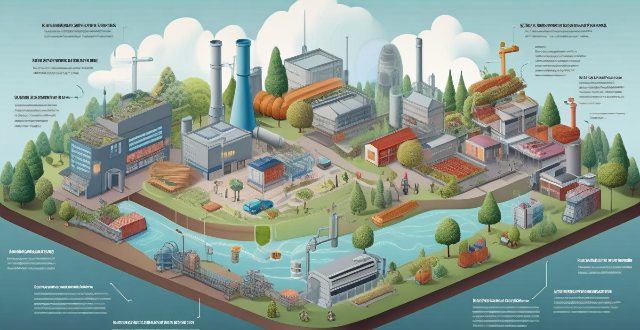
What kind of living conditions can we expect in a lunar base ?
Living on the Moon presents numerous challenges that must be addressed to create a sustainable environment for humans. These include dealing with low gravity, lack of atmosphere, limited water and food resources, waste management, power generation, and communication with Earth. Advancements in technology and scientific research are making it increasingly feasible to establish a lunar base, paving the way for future discoveries and expansion into space.

How are communication base stations maintained and upgraded ?
Maintaining and upgrading communication base stations is essential for reliable and efficient wireless network operation. Regular maintenance includes inspection, cleaning, software updates, and hardware replacement. The upgrade process involves need assessment, design, procurement, installation, configuration, testing, and deployment. Best practices include preventive maintenance, remote monitoring, training, documentation, and collaboration with vendors and service providers. By following these guidelines, network operators can ensure the smooth operation of their wireless networks.
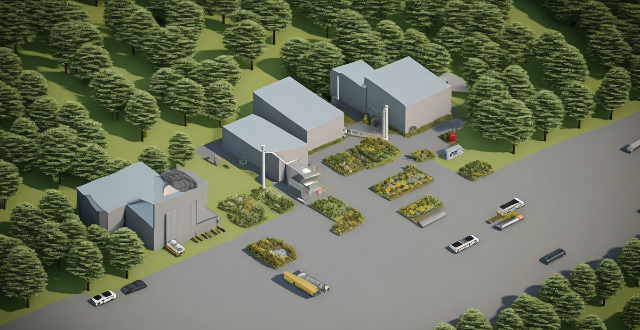
What is the cost of building and maintaining a communication base station ?
The article discusses the costs associated with building and maintaining a communication base station, categorizing them into initial setup costs such as site acquisition, design and engineering, equipment procurement, construction and installation, permits and licensing, and testing and commissioning, and ongoing maintenance costs like rent or lease expenses, power consumption, equipment maintenance, software updates, security measures, and staff salaries. It emphasizes the complexity of these processes and the importance of careful planning and budgeting for such projects.

How do I get started in base jumping ?
Base jumping is an extreme sport that requires a high level of physical fitness, mental fortitude, and proper training. To get started in base jumping, one should evaluate their fitness level, research and learn about the sport, take a course from a reputable instructor or organization, practice skydiving (with at least 50 jumps), choose high-quality gear specifically designed for base jumping, start small with lower altitude jumps, find a mentor for guidance, join a community of base jumpers for support and learning opportunities, and continuously seek out new information and safety protocols to stay safe.

What are the health risks associated with living near a communication base station ?
Living near a communication base station, such as a cell tower or a radio mast, has raised concerns about potential health risks. While the scientific evidence is still being debated, there are several possible health effects that have been suggested by some studies and expert opinions. Here are some of the key health risks associated with living near a communication base station: - Electromagnetic Radiation Exposure: Increased exposure to electromagnetic fields (EMFs) and possible long-term effects on health. - Sleep Disruption: Disrupted sleep patterns and chronic sleep deprivation leading to various health issues. - Stress and Anxiety: Heightened stress levels and mental health impacts due to concerns about EMF exposure. - Environmental Impact: Noise pollution and visual pollution affecting both human health and wildlife.

What is the impact of communication base stations on wildlife and the environment ?
The text discusses the impact of communication base stations on wildlife and the environment. The main concerns are electromagnetic radiation, noise pollution, habitat loss and fragmentation. Electromagnetic radiation can have negative health effects on certain species and disrupt their behavior. Noise pollution can disturb sleep patterns and mask important sounds used by animals for communication and predator detection. Habitat loss and fragmentation can lead to reduced genetic diversity within populations and increased vulnerability to diseases and predators. However, there are measures that can be taken to minimize these impacts, such as careful site selection, landscape design, noise reduction, and ongoing research and monitoring.

What are the potential benefits of establishing a lunar base ?
**Heading: Potential Benefits of Establishing a Lunar Base** - **Advancements in Science and Technology:** Research opportunities in various fields, technological advancements in engineering and manufacturing, and testing new equipment for future missions. - **Economic Opportunities:** Job creation across industries, need for support staff, and the emergence of a new industry focused on lunar base operations. - **Energy Production:** Ideal location for solar power generation, potential for energy export to Earth, and development of efficient solar technology with Earth applications. - **Space Exploration and Travel:** Stepping stone for deeper space exploration, testing new propulsion systems and spacecraft designs, and paving the way for human settlements on other planets or moons. - **International Cooperation and Diplomacy:** Requirement for international collaboration, fostering diplomatic relations, promoting peaceful cooperation among nations, and encouraging global cooperation in addressing shared challenges.

What is the difference between 2G, 3G, 4G, and 5G communication base stations ?
The progression from 2G to 5G in wireless communication technologies represents a monumental leap in terms of speed, capacity, latency, and the range of services that can be delivered. Each generation brings its own set of improvements and capabilities, shaping the way we communicate and use technology. Here's a detailed breakdown of the differences between 2G, 3G, 4G, and 5G base stations.

How can I achieve a flawless base without looking cakey ?
Achieving a flawless base is every makeup enthusiast's dream. However, it can be challenging to get the perfect balance between coverage and avoiding a cakey appearance. In this guide, we will discuss some tips and techniques to help you achieve a flawless base without looking cakey. The first step in achieving a flawless base is understanding your skin type. Different skin types require different products and techniques to achieve the desired look. Here are some general guidelines for each skin type: - **Oily Skin**: Use oil-free or mattifying primers and foundations to control shine and prevent slipping. Set with a loose powder to absorb excess oil. - **Dry Skin**: Moisturize well before applying makeup and use hydrating primers and foundations that won't cling to dry patches. Avoid setting with powder on areas that tend to flake or peel. - **Combination Skin**: Use a lightweight, hydrating primer on dry areas and an oil-controlling one on oily areas. Choose a foundation that works well with both skin types and set with a translucent powder where needed. - **Sensitive Skin**: Look for hypoallergenic and fragrance-free products to avoid irritation. Test new products on a small area of skin before using them all over your face. Proper skin preparation is key to achieving a flawless base. Follow these steps before applying makeup: 1. **Cleanse**: Start by washing your face with a gentle cleanser suitable for your skin type. 2. **Tone**: Use a toner to balance your skin's pH level and prepare it for moisturizer. 3. **Moisturize**: Apply a lightweight moisturizer that suits your skin type, focusing on any dry areas. 4. **Prime**: Choose a primer that addresses your specific concerns (e.g., pore-filling, illuminating, mattifying) and apply it evenly across your face. Selecting the right foundation is crucial for achieving a flawless base without looking cakey. Consider the following factors when choosing a foundation: - **Coverage**: Determine how much coverage you need based on your concerns (e.g., blemishes, redness, discoloration). Lightweight formulas like tinted moisturizers or BB creams offer sheer coverage, while full-coverage foundations provide more substantial concealment. - **Finish**: Choose a finish that complements your skin type and desired look (e.g., dewy, matte, natural). Oily skin may prefer a matte finish, while dry skin may benefit from a dewy or satin finish. - **Shade**: Find a shade that matches your skin tone exactly. Test foundations on your jawline in natural light to ensure a seamless blend with your neck. Once you've selected the right foundation, it's time to apply it using the following techniques: 1. **Start with Less**: Begin by applying a small amount of foundation to your face and build up coverage as needed. This helps prevent over-application and ensures a more natural look. 2. **Use the Right Tools**: Choose tools that work best for your foundation type (e.g., brushes for liquid formulas, sponges for cream or mousse textures). Dampen your sponge slightly if using one to help sheer out the product and avoid streakiness. 3. **Blend Well**: Blend the foundation thoroughly into your skin, paying extra attention to areas where it tends to collect or cling (e.g., around the nose, mouth, and eyes). Use downward strokes to avoid lifting the foundation off your skin. 4. **Set with Powder**: Set your foundation with a loose powder only where necessary (e.g., T-zone) to control shine and extend wear time. Be careful not to overdo it, as too much powder can make your base look cakey. After applying your foundation, you may still have some imperfections that need concealing. Here's how to do it without adding too much product: 1. **Use Concealer Sparingly**: Apply concealer only where needed (e.g., under eyes, blemishes) using a small brush or your fingertip. Tap the product into place rather than rubbing it vigorously. 2. **Set with Powder**: Set concealer with a translucent powder to prevent creasing and ensure longevity. Again, be cautious not to layer on too much powder.

How does cultural diversity affect communication within a workplace ?
Cultural diversity has a profound impact on workplace communication, presenting both challenges and benefits. Challenges include misunderstandings due to language barriers and differences in non-verbal cues, variations in communication styles, and differing norms and expectations. Benefits encompass enhanced creativity, improved problem-solving, and greater empathy. Strategies for promoting effective communication involve education and training, clear messaging, open dialogue, and celebrating diversity. By addressing challenges and leveraging benefits, organizations can build cohesive teams that thrive on their collective differences.
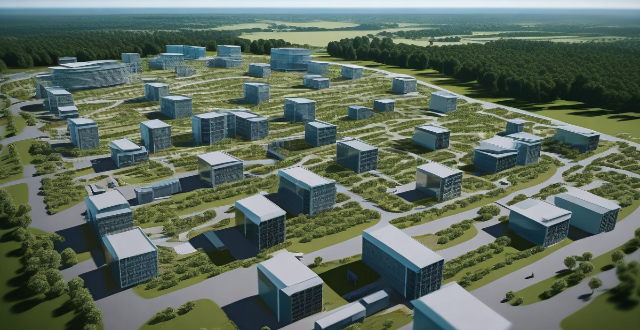
What role do communication protocols play in IoT (Internet of Things) devices ?
Communication protocols in IoT devices are crucial for data transmission, interoperability, scalability, security, and error handling. Common protocols include MQTT, CoAP, Zigbee, Bluetooth Low Energy, and LoRaWAN, each with specific features like lightweight design, mesh networking, energy efficiency, long-range communication, and broadcast capabilities. These protocols enable seamless interaction between devices and will continue to drive innovation in the IoT field.

What are the common causes of communication interference ?
Communication interference can occur due to physical barriers like noise and technology issues, language differences, cultural norms, emotional factors, personal biases, misunderstandings, lack of active listening, and poor message construction. Being aware of these causes can help individuals improve their communication skills and minimize disruptions in various contexts.

How would a lunar base impact space exploration and research ?
**Impact of a Lunar Base on Space Exploration and Research** - **Advancements in Space Technology:** A lunar base would necessitate the development of advanced propulsion systems, life support systems, high-frequency communication systems, and precise navigational tools. - **Expansion of Scientific Knowledge:** The establishment could provide insights into lunar geology, resource identification, astrophysical observations through telescope installations, and monitoring of the solar system. - **Human Spaceflight Capabilities:** Long-term stays on the Moon would allow astronauts to adapt to low-gravity environments and conduct medical research, while also requiring specialized training programs and psychological preparation. - **International Collaboration and Policy Development:** A lunar base would encourage global partnerships, shared resources, and prompt the development of new space laws and ethical guidelines.

How do communication satellites support military operations and intelligence gathering ?
This text discusses how communication satellites support military operations and intelligence gathering, highlighting their role in secure communication channels, wide area coverage, high-speed data transmission, surveillance and reconnaissance, coordination and command, resilience and redundancy.

Can solar flares cause communication interference ?
Solar flares, intense bursts of radiation from the sun's atmosphere, can disrupt communication systems on Earth. This includes shortwave radio signals, satellite communications, and other terrestrial networks. The effects range from signal quality disruption and frequency deviation to satellite link disruptions, GPS accuracy issues, and even physical damage to satellite hardware. While these impacts vary, organizations involved in critical communication operations must be aware of the risks and implement mitigation strategies to minimize potential disruptions.

How does satellite communication compare to other forms of communication ?
Satellite communication offers global coverage, high capacitySatellite communication offers global coverage, high capacity higher latency and initial costs and reliability but has higher latency and initial costs compared to terrestrial and wireless communication. Terrestrial communication provides lower latency and moderate reliability at a lower cost, while wireless communication offers convenience and portability at a variable cost. Satellite communication is suitable for remote areas and sensitive applications due to its security features.
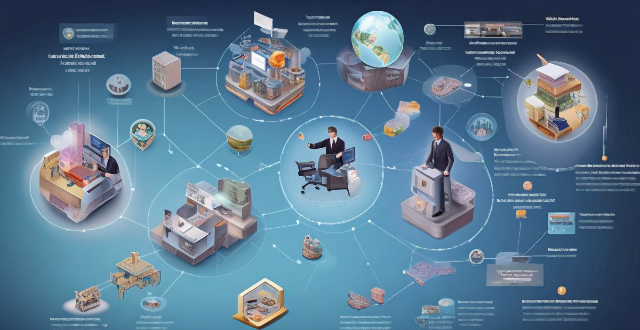
What challenges need to be overcome to create a sustainable lunar base ?
Building a sustainable lunar base presents significant challenges in logistics, environment, technology, and human factors. These include reliable transportation, remote construction, surviving extreme conditions, power generation, effective communication, habitability concerns, health care, and team dynamics. Addressing these issues will require innovative solutions and international collaboration, ultimately paving the way for deeper space exploration.

What are the benefits and drawbacks of using visual aids in climate science communication ?
Visual aids in climate science communication can enhance comprehension, engagement, and universal appeal but may oversimplify data or mislead if not accurately designed. Creators must balance benefits and drawbacks for effective communication.

How can we prevent communication interference during critical missions ?
To prevent communication interference during critical missions, organizations should use reliable communication systems, minimize environmental factors, train personnel adequately, test equipment beforehand, and use clear and concise language. These strategies can help ensure successful completion of missions by minimizing the risk of communication disruptions.

What role does communication play in women's relationship management ?
The article discusses the crucial role of communication in women's relationship management, highlighting its importance in building trust, understanding, empathy, and intimacy. It also provides tips for effective communication, such as active listening, non-verbal cues, I-messages, choosing the right time and place for conversations, and compromising and collaborating. By employing these strategies, women can navigate conflicts and challenges in their relationships effectively.

What technological advancements are necessary for the successful establishment of a lunar base ?
Establishing a lunar base requires technological advancements in areas such as life support, energy production, habitat construction, transportation, communication, health monitoring, and extravehicular activity. Innovations like advanced recycling systems, hydroponics for food production, solar power, nuclear energy, 3D printing of habitat components, radiation shielding, rugged vehicles, high-speed internet, automation, telemedicine, improved spacesuits, and specialized tools are essential for creating a sustainable and efficient lunar habitat.

How does altitude affect communication interference ?
This article discusses how altitude affects communication interference in wireless communication. It explains the various ways that altitude can impact signal strength, including signal attenuation, refraction and scattering, ionospheric effects, and multipath propagation. The article also provides tips for mitigating these effects, such as increasing transmitter power, using higher frequencies, implementing error correction techniques, using directional antennas, and choosing suitable locations for equipment. Overall, understanding altitude's impact on communication interference is crucial for ensuring effective communication in wireless systems.

How would a lunar base contribute to humanity's understanding of the universe ?
A lunar base would significantly contribute to humanity's understanding of the universe by providing advanced research opportunities in geology and astronomy, driving the development of space technology, serving as a training ground for future space missions, and promoting international collaboration.

What are the challenges faced in satellite communication ?
Satellite communication faces challenges such as atmospheric effects, physical obstructions, technical limitations, economic factors, regulatory issues, environmental impacts, security concerns, geopolitical factors, technological advancements, and natural disasters. These challenges highlight the need for innovation and improvement in maintaining reliable satellite communication networks.

What is the impact of communication interference on military operations ?
The text discusses the impact of communication interference on military operations. It highlights five main consequences: loss of situational awareness, delayed response times, compromised security, reduced coordination, and increased risk of misinterpretation. The author emphasizes the importance of secure and reliable communication systems for effective military strategy and suggests developing contingency plans to mitigate the risks associated with communication interference.

What is the role of cybersecurity in protecting communication systems ?
The text discusses the importance of cybersecurity in protecting communication systems by ensuring data confidentiality, integrity, and availability. It outlines measures such as encryption techniques, access control, digital signatures, hash functions, network uptime, redundancy, and disaster recovery plans. Additionally, it suggests best practices like regular updates, firewalls, user awareness training, strong authentication mechanisms, and incident response plans to enhance cybersecurity in communication systems.